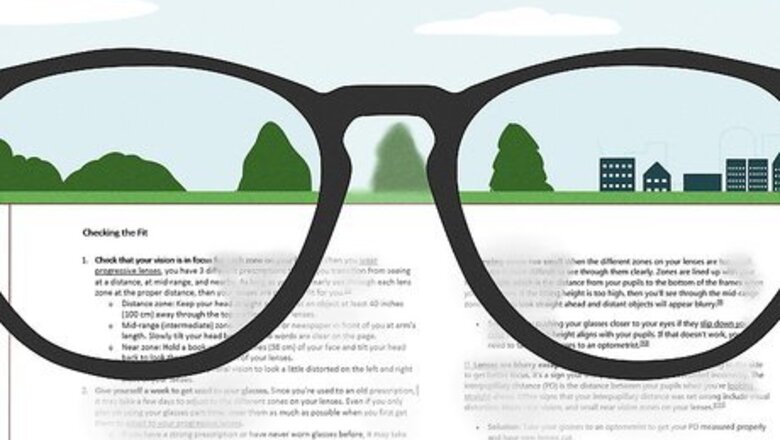
views
- Progressive lenses are correct if you can clearly see distant objects through the tops of the lenses and nearby objects through the bottoms.
- Set your frames lower if your distance vision looks blurry when you look straight ahead. Adjust the frames higher if your near vision is cloudy when you look down.
- Turn your head to look at something instead of moving your eyes to avoid blurry vision.
- Wear your glasses all day for 1–2 weeks so your vision adjusts to new progressive lenses.
Checking the Fit
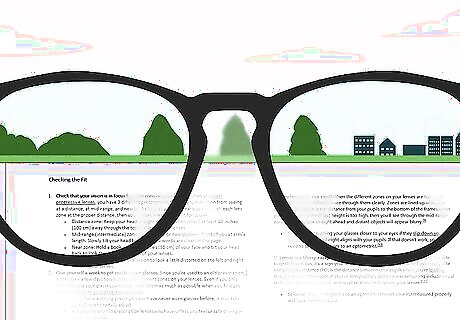
Check that your vision is in focus for each zone on your lenses. When you wear progressive lenses, you have 3 different prescriptions that let you transition from seeing at a distance, at mid-range, and nearby. As long as you can clearly see through each lens zone at the proper distance, then your lenses are perfectly fit for you. Distance zone: Keep your head straight and look at an object at least 40 inches (100 cm) away through the top portion of your lenses. Mid-range (intermediate) zone: Hold a book or newspaper in front of you at arm’s length. Slowly tilt your head back until the words are clear on the page. Near zone: Hold a book within 15 inches (38 cm) of your face and tilt your head back to look through the bottom of your lenses. It’s normal for your peripheral vision to look a little distorted on the left and right sides of your lenses.

Give yourself a week to get used to your glasses. Since you’re used to an old prescription, it may take a few days to adjust to the different zones on your lenses. Even if you only plan on using your glasses part-time, wear them as much as possible when you first get them to adapt to your progressive lenses. If you have a strong prescription or have never worn glasses before, it may take up to 2 weeks to fully adjust. Avoid using any old prescription lenses you have unless you feel unsafe driving in your new glasses. You may experience headaches, nausea, eye strain, or dizziness when you first put on progressive lenses, but these side effects usually go away within the first few days of wearing them.
Common Problems with Progressive Lenses
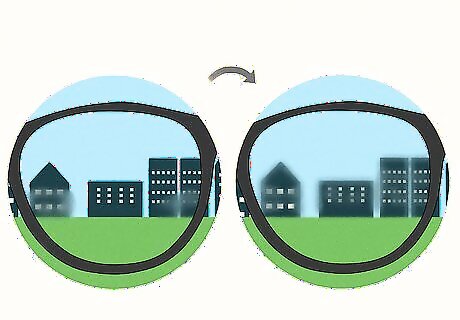
Blurry images when you move your eyes Since your lenses have different prescription strengths, quickly darting your eyes to get a look at something makes you see through the wrong zone. Solution: Turn your whole head and point at what you’re looking at with your nose. If you’re reading with progressive lenses, drop your eyes to look through the bottoms of your lenses and raise your chin.

Frames sitting too high or low on your face When your frames are too high or low, your eyes line up with the wrong zone on your lenses and make it more difficult to see. If you need to lift your head or glasses to read something in your near vision, it’s a sign your frames are too low. In contrast, if objects at a distance look blurry unless you lower your head, then your frames are too high up on your face. Solution: Gently adjust the nose pads by pushing them closer together to raise your frames higher or by widening them.
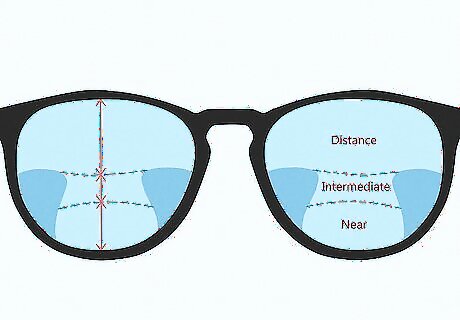
Viewing zones too small When the different zones on your lenses are too small, they make it more difficult to see through them clearly. Zones are lined up with your fitting height, which is the distance from your pupils to the bottom of the frames when you wear them. If the fitting height is too high, then you’ll see through the mid-range zone when you look straight ahead and distant objects will appear blurry. Solution: Try pushing your glasses closer to your eyes if they slip down your nose so the fitting height aligns with your pupils. If that doesn’t work, you may need to take your glasses to an optometrist.
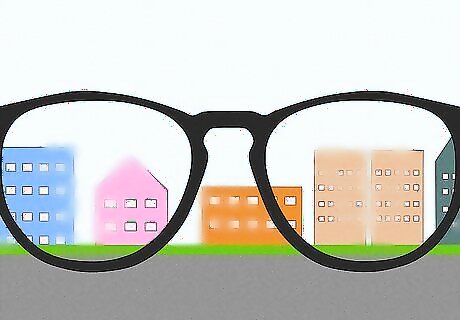
Lenses are blurry except through the sides If you find yourself looking to the side to get better focus, it’s a sign your interpupillary distance was recorded incorrectly. The interpupillary distance (PD) is the distance between your pupils when you’re looking straight ahead. Other signs that your interpupillary distance was set wrong include visual distortion, blurry near vision, and small near vision zones on your lenses. Solution: Take your glasses to an optometrist to get your PD measured properly and have new lenses cut.
What should I do if my vision doesn't improve?
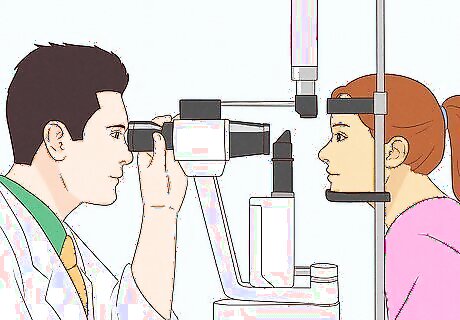
Have your lenses remade by an optometrist. If none of the at-home fixes work and your vision is still blurry through progressive lenses, visit your optometrist and let them know about the issue. Your optometrist will either adjust your frames so they fit properly, or they’ll measure your interpupillary distance and fitting height to order replacement lenses. Optometrists will usually replace progressive lenses for no charge, but it may depend on your provider and vision insurance.


















Comments
0 comment